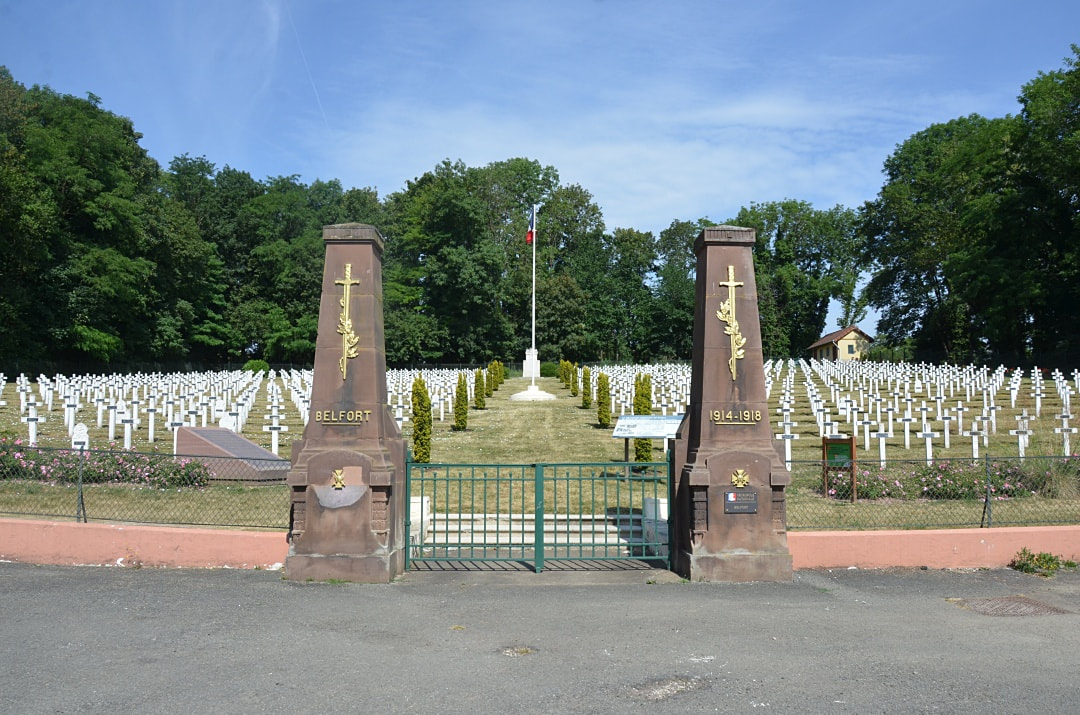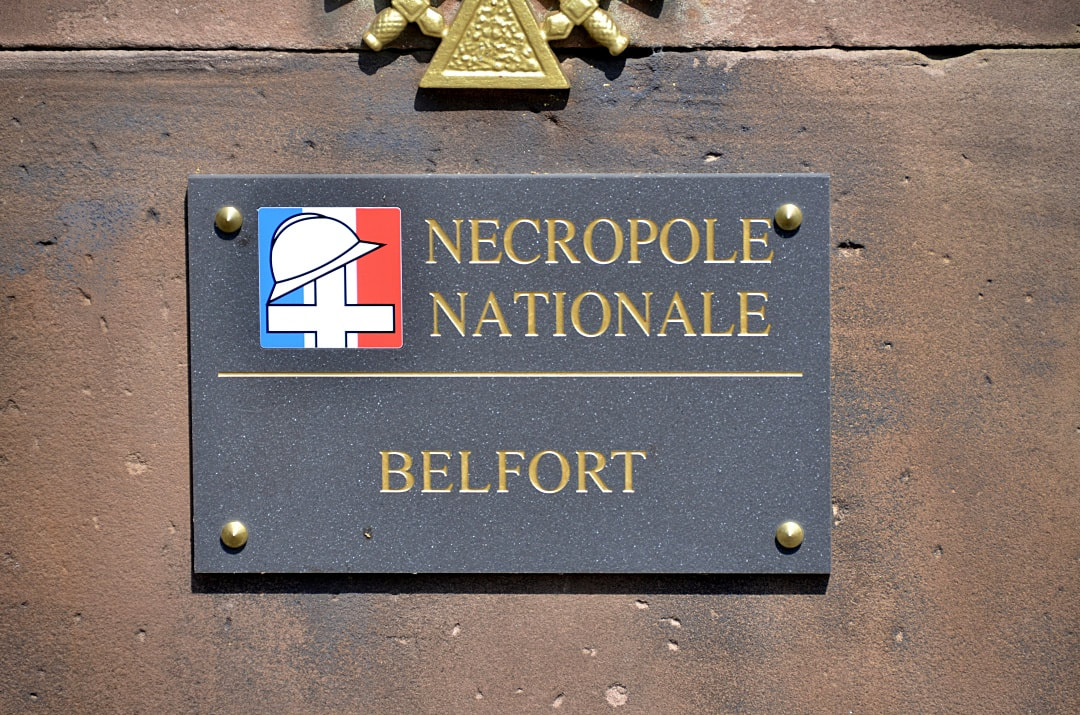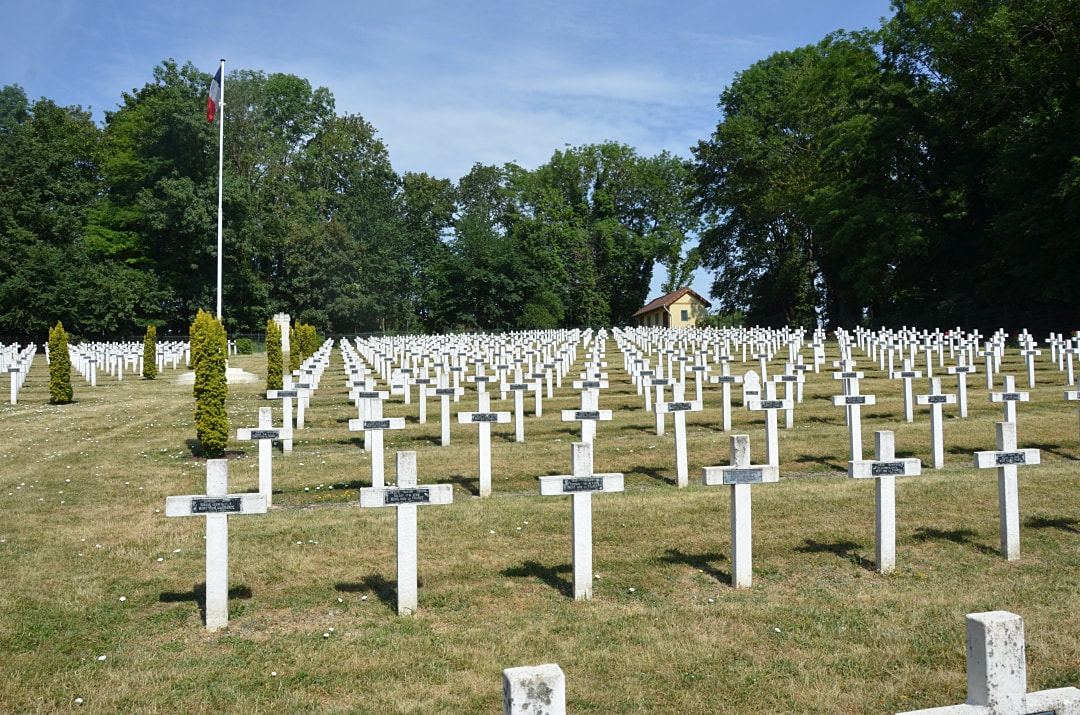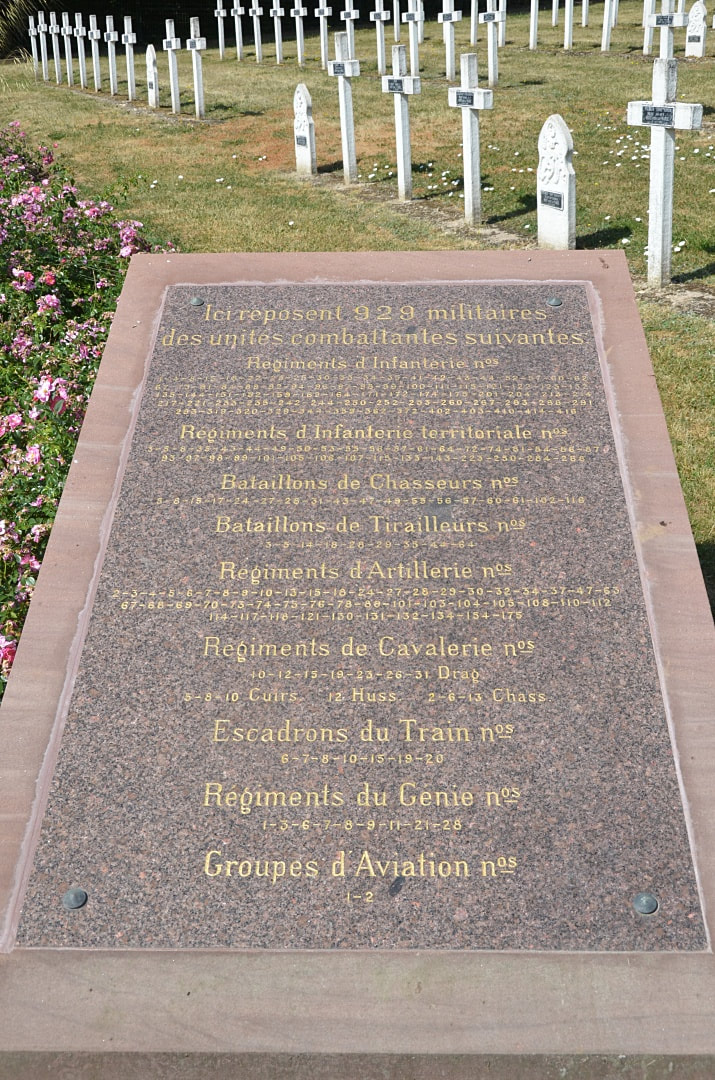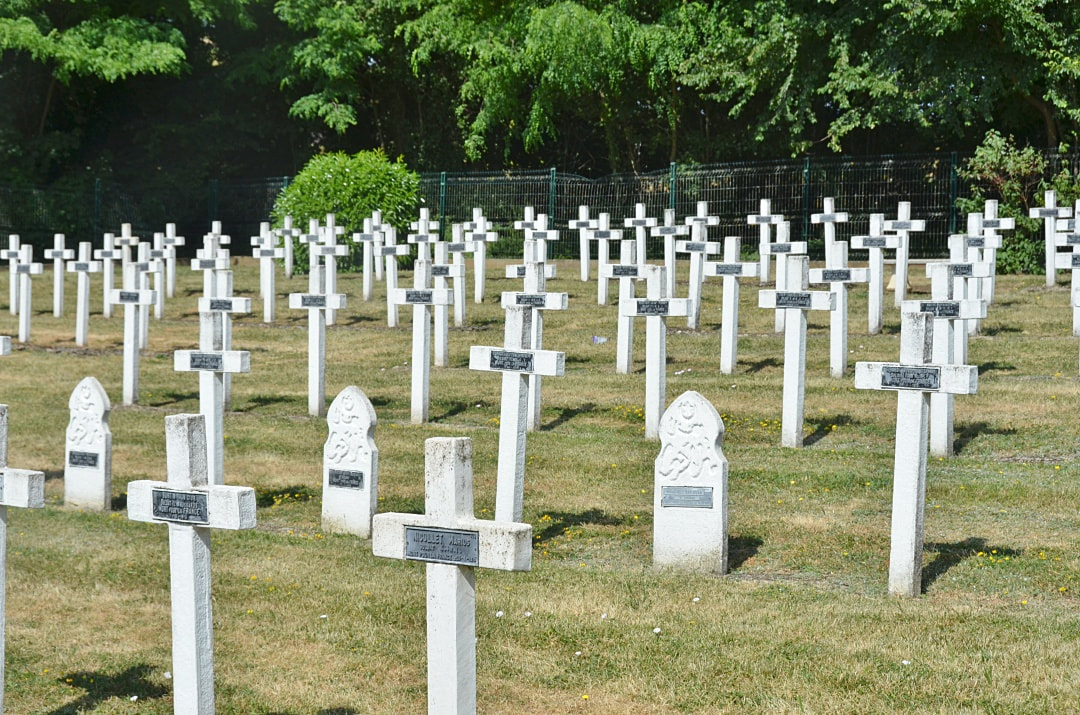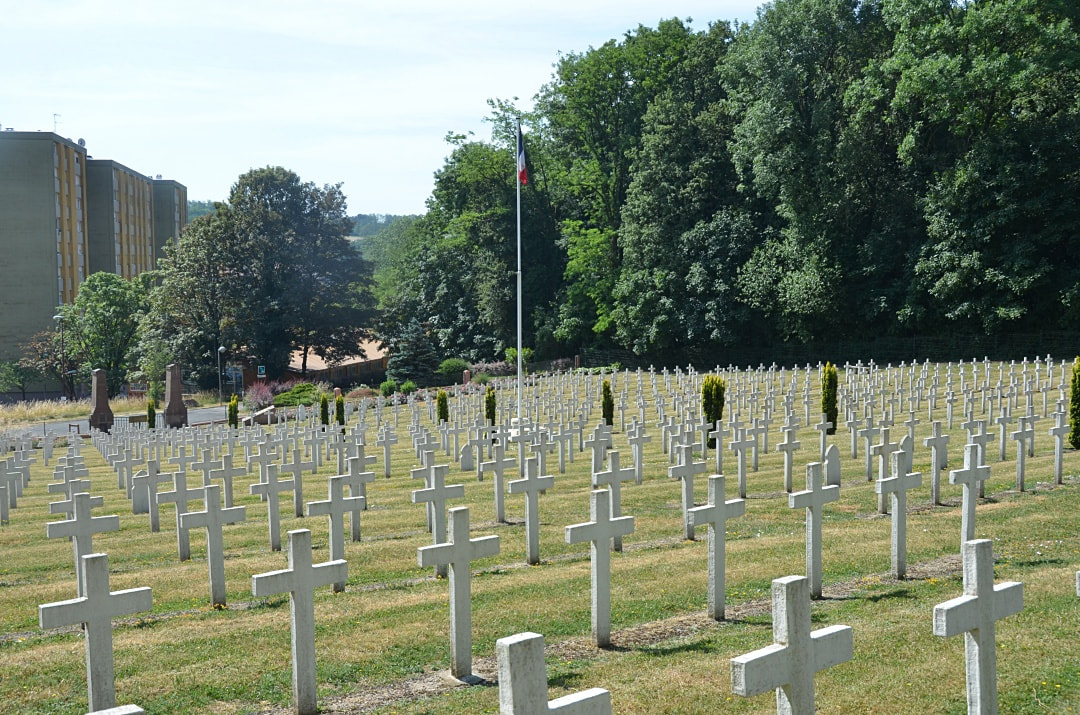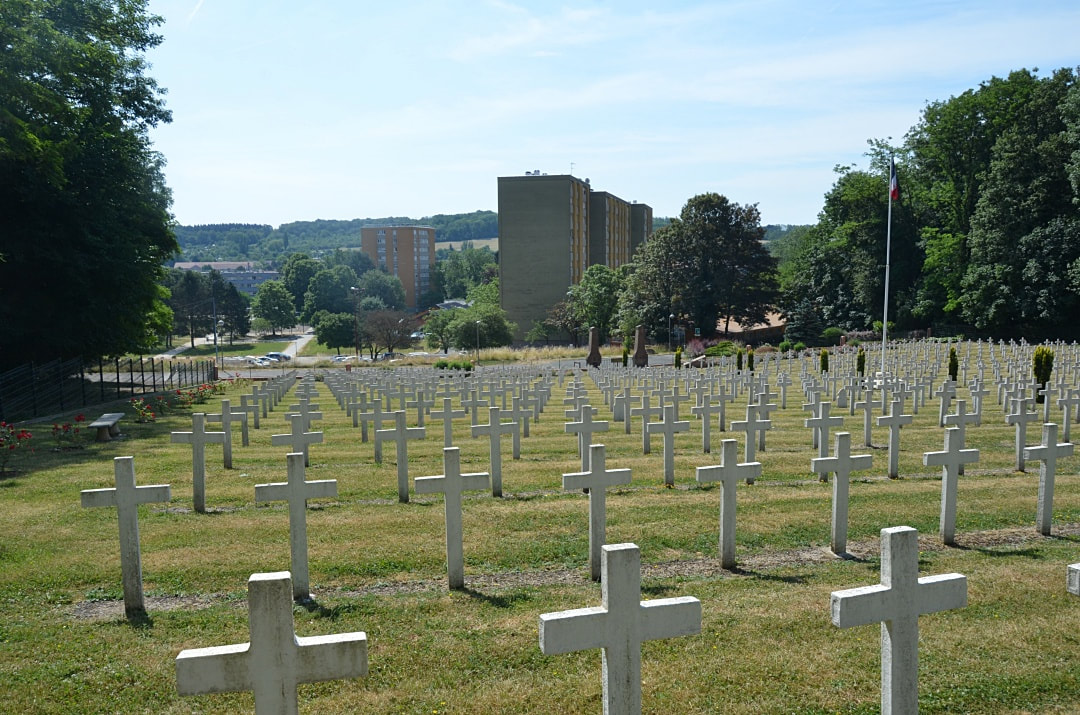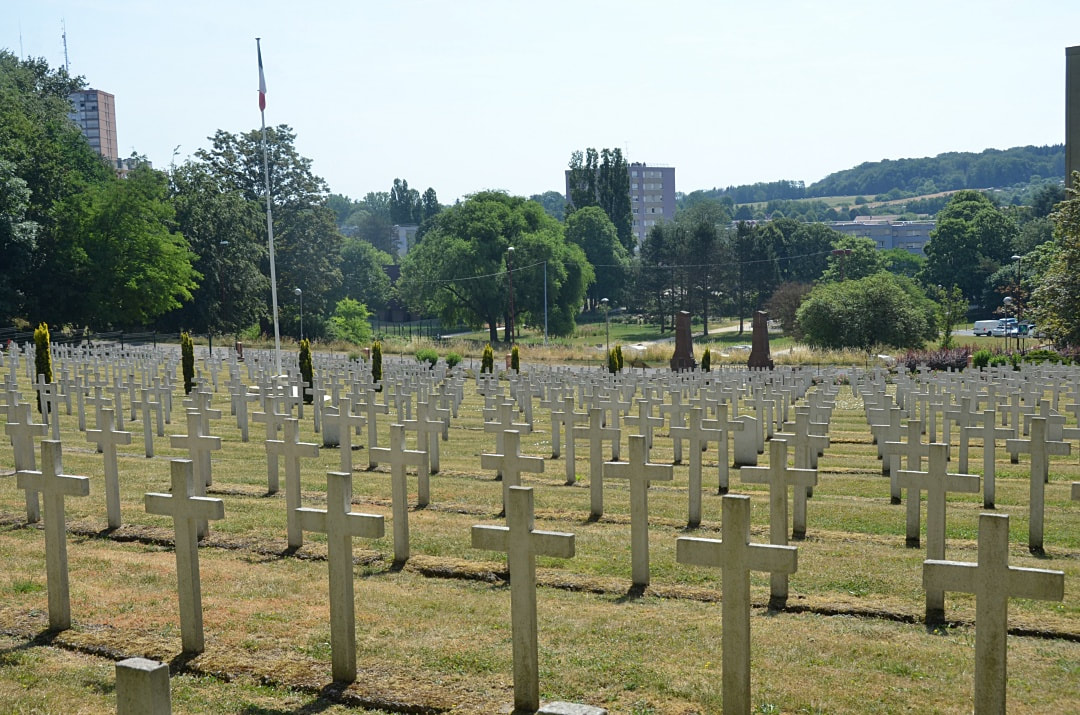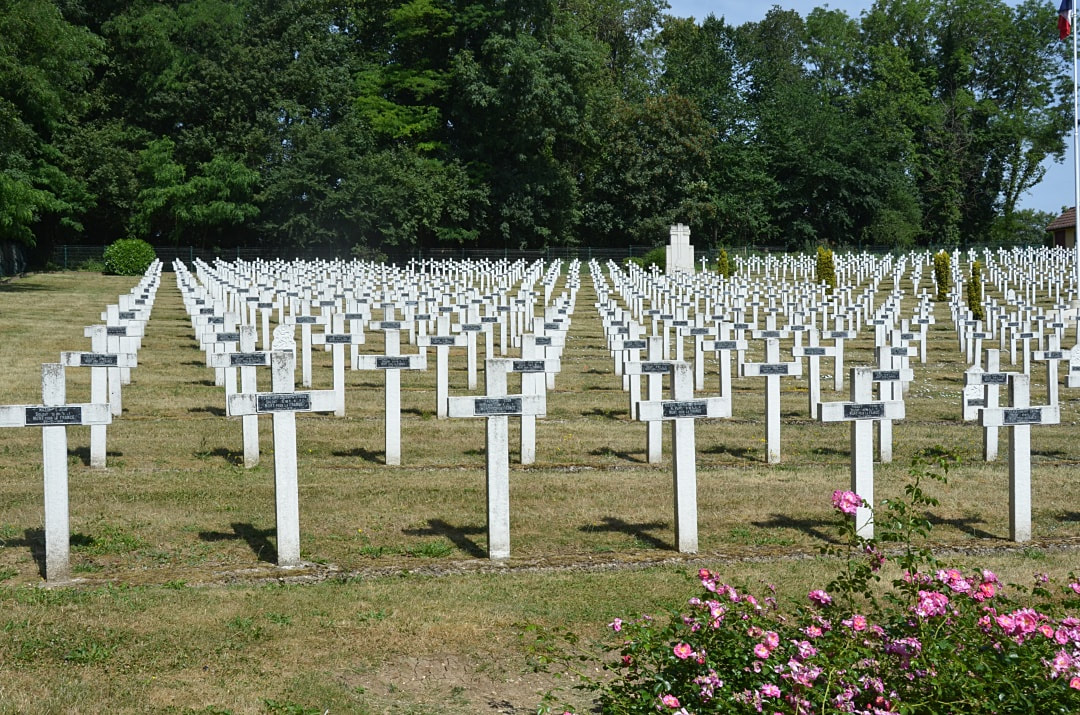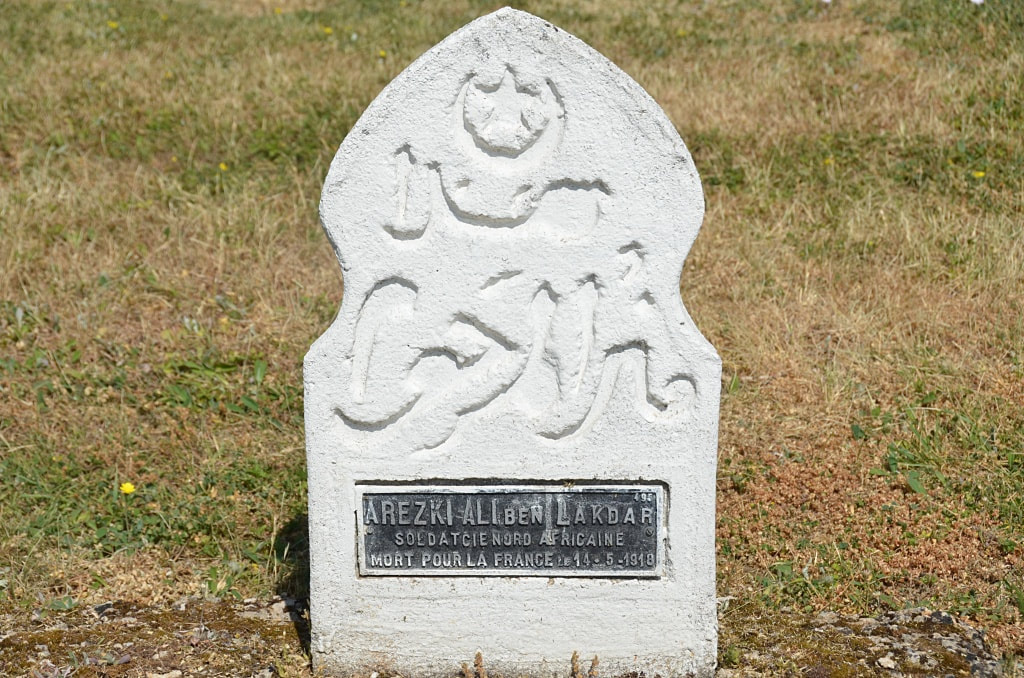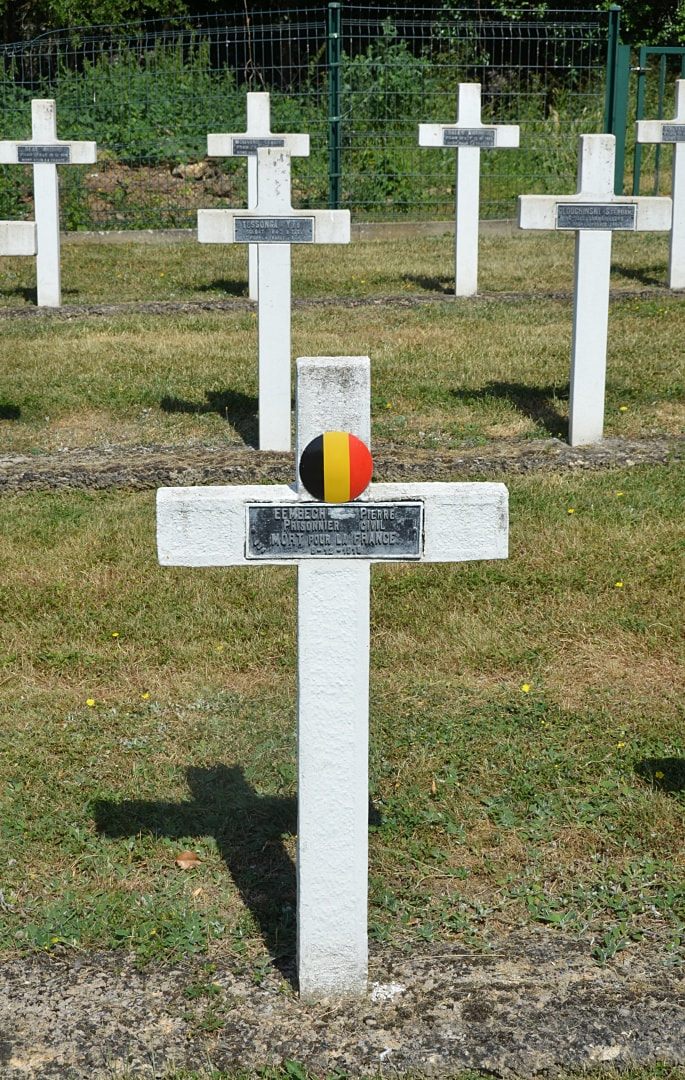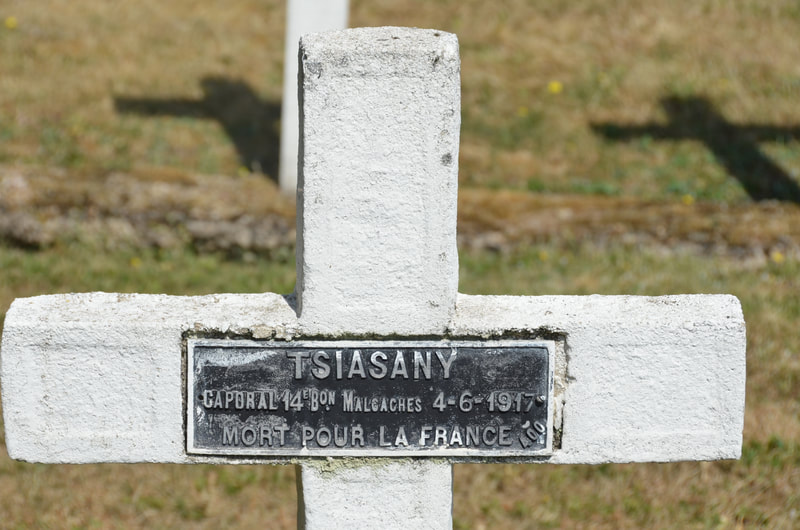BELFORT FRENCH NATIONAL CEMETERY (LE GLACIS-DU-CHÂTEAU)
(La Nécropole Nationale de Belfort)
Territoire-de-Belfort
France
GPS Coordinates: 47°38'15.1"N 6°52'07.3"E
Location Information
Belfort is a city in the Territoire-de-Belfort region of France. The French National Cemetery is located to the east of the city on the Rue Louis Aragon.
Historical Information
La Nécropole Nationale de Belfort (Le Glacis-du-Château) brings together the remains of soldiers who died in the town's hospitals as a result of their injuries during the First World War. Created in 1924, this cemetery was developed up until 1935 in order to hold the bodies exhumed from other communal cemeteries in the Territoire de Belfort area.
In 1988, the mortal remains of soldiers who were initially buried in the Brasse communal military plot were also transferred here. Today, the bodies of 919 French soldiers and 8 foreigners (3 Poles, 3 Russians and 2 Czechs) lie here.
In 1914, the fortified town of Belfort was a major part of France's defence. The 14 forts controlled a gap between the Swiss border and the Vosges. During the first days of the war, a new occupation such as the ones of 1814 and 1871 was feared. That is why a state of siege was put in place by the governor. More than 20,000 women, children, elderly, sick people and foreigners were evacuated to neighbouring departments. Equipment, supplies, buildings...everything was requisitioned as part of the war effort.
However, during the entire conflict, Belfort remained untouched by the major offensives. The front was 20 kilometres away. Daily life was however marked by bombings and the flow of convoys of the wounded. As the war continued and the combats became increasingly violent, the number of wounded continued to rise. Because of such an influx, the 500-bed military hospital was quickly overwhelmed. The health services had to adapt, and requisitioned public and private buildings. And so the Dollfus Mieg et Compagnie spinning mill, schools in the Montbéliard area and the Rue de Châteaudun as well as the Sainte-Marie secondary school were transformed into temporary hospitals. Adolphe Pégoud, the French fighter ace with six victories under his belt, was transferred to one of these structures after being shot down over Petit Croix on 31 August 1915. He was buried on 3 September in the cemetery at Brasse, where he remained before being exhumed in 1924, when he was buried at the Montparnasse cemetery in Paris.
Total Burials: 927.
World War One Casualties: France, 918, Poland 3, Russia 3, Czechoslovakia 2, Belgium 1. Total 927.
Belfort is a city in the Territoire-de-Belfort region of France. The French National Cemetery is located to the east of the city on the Rue Louis Aragon.
Historical Information
La Nécropole Nationale de Belfort (Le Glacis-du-Château) brings together the remains of soldiers who died in the town's hospitals as a result of their injuries during the First World War. Created in 1924, this cemetery was developed up until 1935 in order to hold the bodies exhumed from other communal cemeteries in the Territoire de Belfort area.
In 1988, the mortal remains of soldiers who were initially buried in the Brasse communal military plot were also transferred here. Today, the bodies of 919 French soldiers and 8 foreigners (3 Poles, 3 Russians and 2 Czechs) lie here.
In 1914, the fortified town of Belfort was a major part of France's defence. The 14 forts controlled a gap between the Swiss border and the Vosges. During the first days of the war, a new occupation such as the ones of 1814 and 1871 was feared. That is why a state of siege was put in place by the governor. More than 20,000 women, children, elderly, sick people and foreigners were evacuated to neighbouring departments. Equipment, supplies, buildings...everything was requisitioned as part of the war effort.
However, during the entire conflict, Belfort remained untouched by the major offensives. The front was 20 kilometres away. Daily life was however marked by bombings and the flow of convoys of the wounded. As the war continued and the combats became increasingly violent, the number of wounded continued to rise. Because of such an influx, the 500-bed military hospital was quickly overwhelmed. The health services had to adapt, and requisitioned public and private buildings. And so the Dollfus Mieg et Compagnie spinning mill, schools in the Montbéliard area and the Rue de Châteaudun as well as the Sainte-Marie secondary school were transformed into temporary hospitals. Adolphe Pégoud, the French fighter ace with six victories under his belt, was transferred to one of these structures after being shot down over Petit Croix on 31 August 1915. He was buried on 3 September in the cemetery at Brasse, where he remained before being exhumed in 1924, when he was buried at the Montparnasse cemetery in Paris.
Total Burials: 927.
World War One Casualties: France, 918, Poland 3, Russia 3, Czechoslovakia 2, Belgium 1. Total 927.

